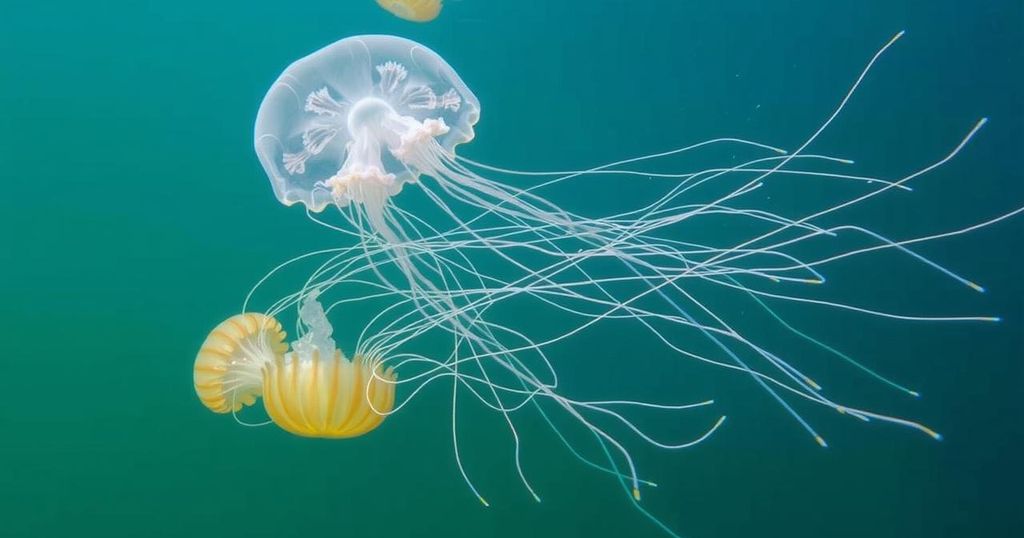The Peach Blossom Jellyfish, a species related to marine jellyfish, is increasingly being observed in Canadian freshwater lakes, especially due to rising water temperatures linked to climate change. These jellyfish are small, non-stinging organisms that bloom dramatically under specific conditions. Their presence poses potential ecological challenges regarding food competition with native species. The situation underscores the broader implications of climate change on aquatic ecosystems.
The recent proliferation of jellyfish in Canadian freshwater lakes has raised questions among the public, particularly about sightings of these unusual organisms. Jellyfish, specifically the freshwater species known as Craspedacusta sowerbii, commonly referred to as the Peach Blossom Jellyfish, have become increasingly visible due to climate change effects that enhance their growth conditions. Although these jellyfish are related to marine jellyfish, they are relatively small and non-stinging, measuring between one to two and a half centimeters in diameter. Reports indicate that their populations are flourishing, resulting in blooms that can appear dramatically and unexpectedly under warmer temperatures, often lasting only one to two weeks. The increase in sightings is attributed to rising lake temperatures that favor the conditions necessary for their mature form to breed and thrive. These jellyfish have existed in certain southern Canadian lakes since at least 1938, yet it is their larger, more visible forms which are gaining attention now, unraveling a potential ecological concern regarding food web dynamics as they compete for zooplankton prey in warming habitats. As climate change continues to shift species distribution, the implications of freshwater jellyfish on local ecosystems, particularly for fish species dependent on zooplankton, remain an area of significant concern that requires further investigation and understanding.
The emergence of jellyfish in freshwater lakes, particularly in Canada, is gaining attention amid discussions on biodiversity and climate change. The Peach Blossom Jellyfish, Craspedacusta sowerbii, is considered an introduced species outside of its native habitat in China and has been successfully observed in freshwater bodies across the globe except for Antarctica. Their life cycle primarily includes an unseen polyp stage attached to surfaces in lakes, contributing to their previously unnoticed presence. However, under suitable environmental conditions, specifically warmer water temperatures, these jellyfish bloom, leading to increased public awareness. As the climate warms, the distribution of these jellyfish is expanding, highlighting the challenges posed by invasive species and changing aquatic ecosystems, necessitating further research to understand their ecological impact better.
In summary, freshwater jellyfish are indeed present in Canadian lakes, and their increasingly visible populations are linked to the effects of climate change, which enhances conditions for their proliferation. As we continue to observe these jellyfish in our lakes, it is crucial to comprehend their potential ecological consequences, especially concerning the availability of zooplankton, which are vital for certain fish species. Understanding and monitoring the interactions between these newly prominent jellyfish and lake ecosystems will be essential as climate conditions continue to evolve.
Original Source: theconversation.com






